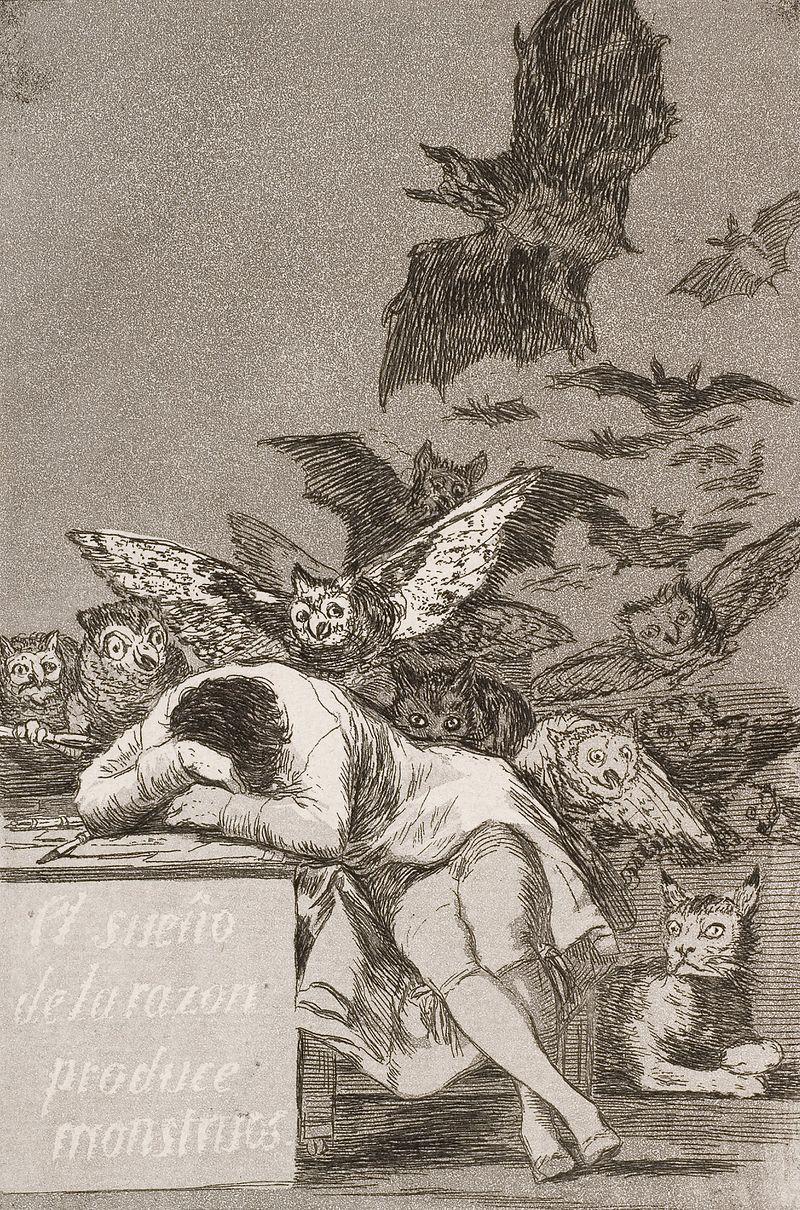Goya's biography, full of nuances and contradictions, feeds a legend with echoes of romantic fiction and clichés. This legend was largely reinforced by a foreign perspective, as happened with Bizet's Carmen, and was then adopted by Spanish culture and politics at pivotal moments, such as the creation of a national identity, the Democratic Six-Year Period, and the Civil War. Beyond the local context, his artistic relevance lies in the way his works encapsulate the full range of human experience, with all its light and dark moments: life and death, popular folklore and the ideals of the Enlightenment, delicate emotions and brutal realities.
His work shows the tension between the festive and the tragic, the intimate and the collective, the enlightened ideal and the popular traditions and baroque expressions. Goya the romantic, the realist avant la lettre, the early decadent, characterized as a plein air painter, expressionist, surrealist, hyperrealist... In this approach, his life and work form a palette on which all colors merge: on that mercurial surface, we seek our own image, our legitimacy, only to ultimately present ourselves on a saucer.
Unlike other forms of realism, which focus on the personal and intimate experiences of individuals in everyday life, Spanish realism is characterized by a peculiar mechanism of inversion. Considering it indecent to expose one's inner self, the process is reversed: the soul is revealed outwardly, while the body retreats inwardly. This allows the expression of human complexity to avoid absolutes, showing all the colors between light and shadow.
The exhibition invites visitors to engage with the concept of 'Spanishness' by critically exploring clichés, rather than rejecting them outright, and using realism as a means of understanding a Spanish visual tradition that Goya takes from the time of Diego de Velázquez to modernity. The Goya and the Goyaesque function as complex models, full of nuances and contradictions, capable of dialoguing with different generations and shedding light on Spain's historical and cultural facets. The artist's oeuvre functions as a substantive element, offering a comprehensive exploration of contemporary Spanish art from the vantage point of seventy artists who engage in a discourse with his legacy, thereby establishing a genealogy grounded in our distinct tradition, a tradition that endures to the present day.
Rocío Gracia Ipiña & Leticia Sastre Sanchez




